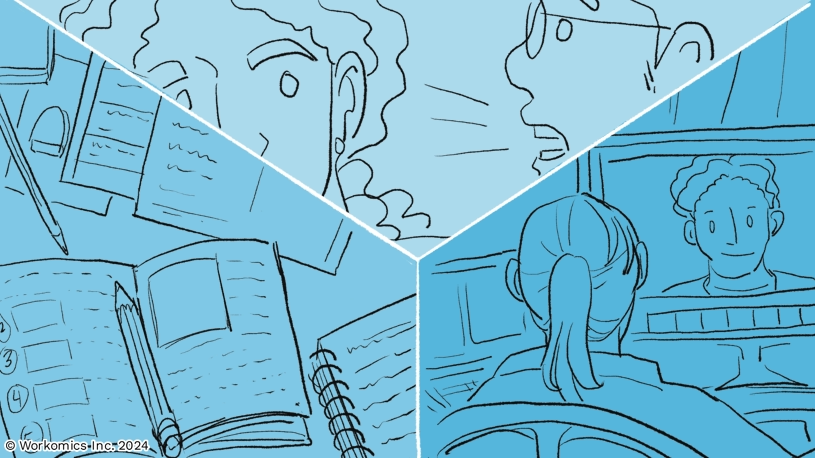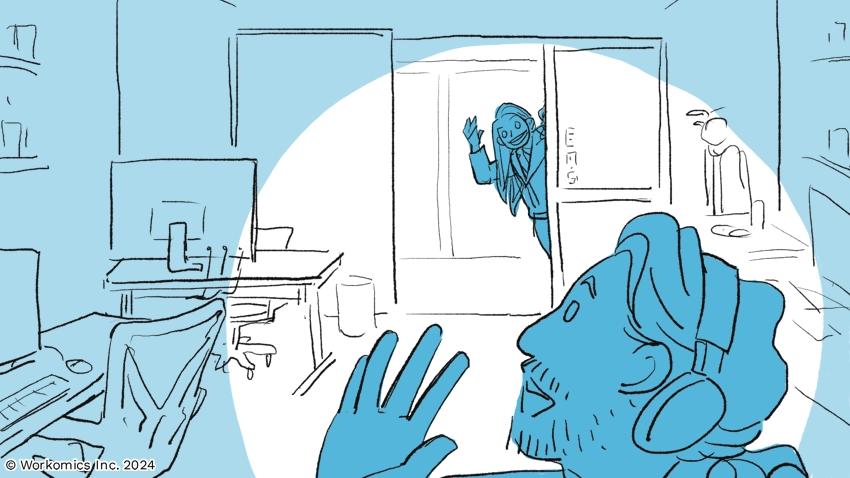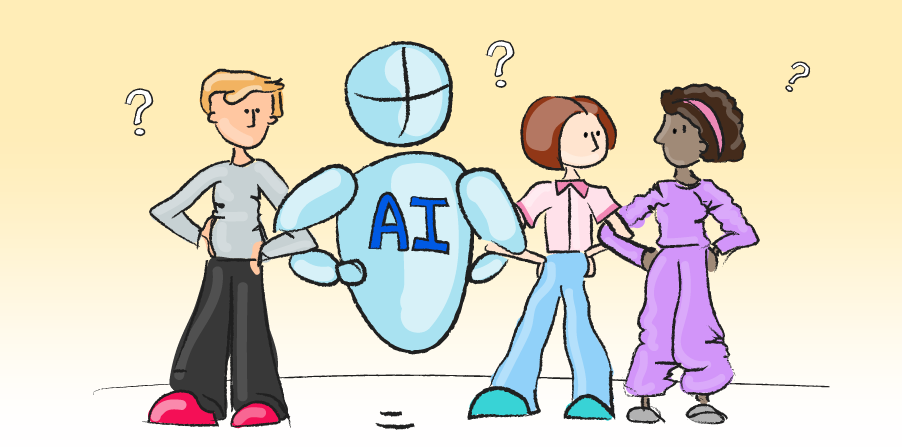We’re all pretty settled into our new equilibria for hybrid/remote work. While there are a few outliers insisting on a fully in-person work schedule, most organizations are mandating only a few days in the office each week, with some even going fully remote.
Whatever the policy at your particular workplace, you are likely grappling with some design tensions of remote work. A design tension exists whenever our challenge is not about solving a problem, but finding the right balance of trade-offs. No matter what we do, there will be winners and losers — we are just choosing where the discomfort and inconvenience will fall.
Small changes in the environment upset the balance in a design tension. That means the work of navigating tensions is never really done. What was an effective policy last week may constitute unacceptable trade-offs next week, as circumstances and priorities change.
There are surely countless tensions within remote work, but let’s zero in on three that are particularly thorny and salient:
-
The Tension of Communication
-
The Tension of Camaraderie
-
The Tension of Coordination

The Tension of Communication
Remote-first companies usually frame their documentation-heavy approach as a best practice the rest of us can adopt. But in fact, their emphasis on written communication is just one way of resolving the tension, and it’s a way that might not generalize outside of technology firms. The GitLabs and Shopifys of the world have workforces consisting primarily of software developers — i.e., people who have had years of training on writing very precise instructions following a structured syntax and reading precise instructions written by others to build on that work. With a core group of employees that is uniquely well-equipped to thrive in a documentation-rich environment, communications are much less thorny for high-tech firms. But in other industries, amping up written communication is far from a panacea.
If there is one universal truth in large organizations, it’s that you are doomed to failure if your initiative is predicated on people reading carefully and following processes. People don’t read. People don’t follow processes. And people especially don’t read about how to follow processes correctly. Even with incredibly robust handbooks about everything, many people will spend their workday operating with less context. Non-readers have lost all the in-person 3D cues about ‘how things work around here,’ and haven’t gained much (anything) from all the documentation.
Meanwhile, there are lots of wonderfully talented people for whom writing is a barrier to productivity. Engaging via asynchronous Slack messages slows them down and makes them less effective compared to being co-located and having quick verbal exchanges. This isn’t only about the mechanics of writing (although that can be a factor too). It’s an artifact of how people naturally process information and the kind of training they’ve had.
In the pre-pandemic days with a few dozen firms doing remote-only work, this wasn’t much of an issue. People who thrive on the written word could self-select into document-heavy workplaces, and other people could work elsewhere. But now we’re talking about almost every organization in every industry trying to work remotely for significant proportions of the week. For millennia, ‘speak to people within earshot’ has been the default mode of human communication. The written word has played an increasing role since Gutenberg, but remote work is introducing a step change— one that works brilliantly for some people, while hindering others. That is a tension every remote/hybrid team needs to resolve in a way that works for the specific individuals and the specific work they need to do.

The Tension of Camaraderie
Meanwhile, one of the effects of working remotely is that it is harder to forge meaningful friendships at work. Some will argue that is no big deal, and certainly it’s preferable to have friendships that span the different domains of your life. But for most of us, work stands alone for the amount of time it affords for spending time with other people.
Most of us spend 30+ hours every week with our colleagues. Frequency matters: funny anecdotes, minor aggravations, idle observations, small victories are all more shareable in a day-in, day-out relationship. We have the opportunity to know coworkers in a way that is hard to replicate elsewhere in adult life. The resulting sense of relatedness and belonging is a key ingredient to our well-being.
In co-located work, relatedness emerges organically from time spent in the same physical space. It doesn’t require conscious effort. By contrast, virtual interactions push us to be more transactional. We may be spending the majority of our time with these people, but we’re not sharing the personal elements that create camaraderie. Instead, teams tend to form what is known as “cognitive swift trust” — relying on each other but only within the limited confines of a specific collaboration or assignment.
While cognitive swift trust can be very effective for getting things done, the tension of camaraderie occurs because it requires separate, standalone effort. Either we need to get together in person, or we need to deliberately orchestrate a virtual interaction that is focused on building trust. No matter what we choose, it will require time away from critical deliverables and pressing deadlines. Tensions abound as we all deal with different priorities, different affinities for forming friendships at work, and different preferences for how to form those bonds.

The Tension of Coordination
Few will disagree that specific kinds of work are vastly improved by being in person. There is a category we call ambiguous knowledge work, which really does go more smoothly when everyone is sharing the same space. If you do ambiguous knowledge work, you need ways to sometimes bring people together in the office — no matter where you sit on the hybrid-remote continuum.
The ‘coming into the office’ element of remote work is what economists call a coordination game: the payoffs are higher when more people choose the same action. There are set costs to leaving home for work — the time and expense of a commute, the need to haul all your gear, feeding yourself when you’re more than 20 feet from your fridge.
If you incur all those costs only to sit in an empty office and spend your day on zoom calls, that’s not a very good return on investment. Moreover, it creates a negative reinforcement loop, so everyone is less likely to come into the office because there isn’t a critical mass.
On other other hand, if you make the trek to the office for a bundle of meetings that benefit from being in-person and catch up with multiple people, the returns on your office day are much higher. That creates a positive reinforcement loop, where visiting the office seems like a worthwhile effort, at least on occasion.
The tension arises from why we value working from home. It’s not really about working in yoga pants and being able to get dinner started while on a conference call. What we mostly value about working-from-home is the autonomy to choose where and when we work, balancing our professional and personal priorities. By its very nature, coordinating with others undercuts our individual autonomy and flexibility. In very small offices, that coordination might be so minimal that it hardly matters. But if someone mandates three days in the office every week, that doesn’t feel like a compromise (“oh good, I still get to work from home two days”). It feels like I have ceded all of my flexibility to someone else’s say-so.
Ultimately, everyone can’t make their own independent decisions on when to work from home *and* have a vibrant place filled with colleagues whenever they capriciously decide to come into the office. It’s tensions and trade-offs all the way down.
A blueprint for together time
We facilitated one such “together time” earlier this month, assembling a 20-person team for three days. The measure of success for these kinds of sessions is coming out with clear priorities, forward momentum, and no one feeling like their time was wasted. Preparing for such a session is no small feat. It took us roughly six weeks and 47 draft agendas to prepare for 20 hours of session time. We invested all that time and energy because wanted to be really purposeful about our goals for the session, and how we would use our time together.
We ended up thinking about our agenda in four distinct categories of activities:
-
Didactic time for sharing key strategies, initiatives, and constraints. This information could have equally been shared in a Zoom call, but because we were in the room, we took deliberate steps to make it an interactive discussion with lots of questions and debate. While nothing about the base content was different from what it would have been virtually, the experience of being in the room was worlds apart. We were able to be responsive to the information needs of the people in the room in real-time, and just generally got everyone on the same page.
-
Generative time for working collaboratively and connecting the dots across a variety of workstreams and objectives. In these windows of time, we built frameworks and timelines and generated new ideas, but the output itself was not so important. What really mattered was giving people a mechanism to internalize and build on the didactic information, and leaving with a clear sense of next steps.
-
Team time for building camaraderie and rapport. Often, this feels relegated to meals and happy hours around the main agenda. We had those too, but we also spent time on facilitated activities to help us connect on a deeper level and build our collaboration models. We played a lot of improv games, because they emphasize generosity in offering ideas, and building on the ideas of others. We also brought in 21 Toys to lead us through their Failure Toy workshop, which was a wonderful way to surface team dynamics and talk about them in a productive way.
-
Norms time for deliberate discussions about building on our in-person dynamics to collaborate remotely over the months ahead. We covered everything from software platforms to email expectations, and left with a clear set of behaviours for ongoing work, plus some action items to get the systems and processes in place.
Our other ideas worth exploring
Three principles to make AI work for people and teams
Meet Daisy: An AI Case Study. Daisy is a Regional Sales Enablement Specialist for a large multinational in a heavily regulated industry. She works with sales executives in her region to help them build skills and deliver better outcomes for customers and the business.
An AI Policy-in-Progress
We use AI judiciously, so that we are minimizing the downsides and maximizing the benefit. Our use of AI should be additive, transparent, eco-conscious, and voluntary.
GenAI, capitalism, and human flourishing
How capitalism breaks down in the face of GenerativeAI, and why we need to find ways to optimize for human flourishing.



